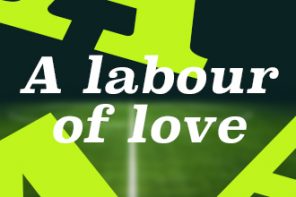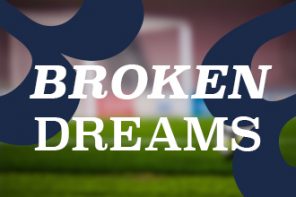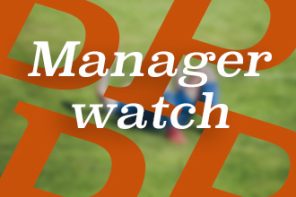Arizona is a great state: many great colleges, a great climate and the sports are plentiful. But it’s not necessarily somewhere that’s considered a hotbed for football – or soccer as its known locally – and even less so a place where a handful of Football League stalwarts would rock up to from England.
But for a brief spell more than 40 years ago, that’s exactly what it became when the ill-fated Phoenix Fire attracted a clutch of British arrivals, including Harry Redknapp, to the southern US state.
During the 70s and 80s, the North American Soccer League (NASL) was filled with great players, glitzy marketing campaigns and any city that wanted to be in on the fun. The game also saw many people get into the sport who didn’t know what they were doing. Since the fall of the NASL, Arizona has rebounded with soccer clubs that are thriving. Such wasn’t the case in the 80s.
Leonard E. Lesser, an insurance executive from Arizona, wanted to bring professional soccer to Arizona for the 1980 season. Lesser shot for the moon, trying to bring a top-level club to the area. Most clubs – except for the Los Angeles Aztecs, Tampa Bay Rowdies, and the Cosmos – were unstable at best, so a big money investor could move an NASL club. Lesser found a seller he thought of in Harry Mangurian, who owned the Boston Celtics and was principal owner of the Memphis Rogues, who drew poorly in the Liberty Bowl.
So Lesser started a company called Phoenix Professional Sports and they announced an agreement to purchase the Rogues on 28 June 1979. Lesser indicated they would be relocated to Arizona for the 1980 season. The plan was either to play at the 21,000-seater football stadium at Phoenix Union High School or the 70,00-seater Sun Devil Stadium on the campus Arizona State University in Tempe.
Then a week later, the sale fell apart. Mangurian said on 7 July 1979 that Lesser’s group had failed to meet terms in the deal. Lesser, now denied the Rogues, turned his attention to the American Soccer League (ASL), somewhat of a second division with clubs spread all over the country. The ASL had been around in some form or another since the 20s and operated on a smaller budget. ASL sides played in stadiums like the ones that Lesser wanted to put the Rogues in.
The Memphis Rogues were a good candidate for relocation because they lasted for three years in Memphis as an outdoor team and one season as an indoor club between 1978 and 1980. They came in during the NASL expansion extravaganza of winter of 1977-78 with five other clubs. By the end of 1980, all six had moved or folded. During their years in Memphis they had an overall record of 30-62, with a league’s worst 6-24 season in 1979.
In 1980, Harry Mangurian (pictured above) finally sold the Rogues to Avron Fogelman, the owner of the Memphis Chicks minor league baseball team. Fogelman operated the club for one season and sold it to Vancouver real estate speculator Nelson Skalbania in September 1980. Skalbania moved the franchise to Calgary, naming them the Boomers for their only season of 1980 as they folded in September 1981.
Back in Phoenix on September 25, 1979 the American Soccer League awarded a 1980 expansion franchise to Lesser. So to make his club a hit, Lesser brought in long-time Everton and Southampton midfielder Jimmy Gabriel as head coach. Gabriel came to the USA in 1974 to play for the Seattle Sounders. In 1977 he took over as head coach of the Sounders and led them to the Soccer Bowl against the New York Cosmos, which they lost. One of the coaches on his staff was former West Ham winger Harry Redknapp, whose knees at this point were not allowing him to play as much. Gabriel and Redknapp left the Sounders in August of 1979 after a losing campaign. When Lesser hired Gabriel, Redknapp came with him.
The Phoenix Fire had their first pre-season training in late February 1980. Among the squad, they had 1978 MVP Jimmy Rolland alongside a mix of British players, including goalkeeper Kieron Baker, defender Neil Hague and forward Terry Shanahan.
They also brought in a trio of players from America, Tim Logush, Dean Shemeld, and Tom Lytle. In the run up to the season’s curtain raiser, they played a series of exhibition matches, against the likes of NASL’s Chicago Sting, Mexico’s national team and the Golden State Gales. The players received their paychecks on 1 March, but the club missed the next payroll on 19 March.
The local papers floated a story that the club was about to fold, which Lesser denied. Gabriel seeing the writing on the wall, helped his players find new clubs. The ASL postponed the Fire’s season opener, so the Fire organised a fundraising match for the unpaid players against a local Arizona amateur team instead.
By 27 March – little over six months since Lesser secured the expansion franchise – the Fire folded after not finding new investors. In January 1981, a grand jury indicted Lesser on 14 charges related to the Fire. Most of it was fraud, securities fraud, theft and falsification of corporate records. In December 1981, Lesser was sentenced to serve a one-year sentence in the Maricopa County Jail.
Jimmy Gabriel moved quickly to a new job with the San Jose Earthquakes where he managed George Best and even pulled on his boots himself to play during the indoor season too. Eventually, Gabriel did go back to manage in England, taking over Everton for a couple caretaker spells with Everton. His assistant, Redknapp, got himself back to England, licked his wounds and set about on a managerial career that spanned more than three decades.






